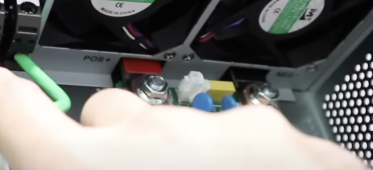Hopefully they survived.. It does however has this in the manual:
CAUTION! Before connecting the DC circuit, ensure proper polarity of the system. Ensure the positive (+) terminal of the inverter is properly connected to the battery, and disconnect/fusing or breaker, as well as the polarity of the negative (-) connections.
CAUTION! Before connecting the DC circuit, ensure proper polarity of the system. Ensure the positive (+) terminal of the inverter is properly connected to the battery, and disconnect/fusing or breaker, as well as the polarity of the negative (-) connections.




